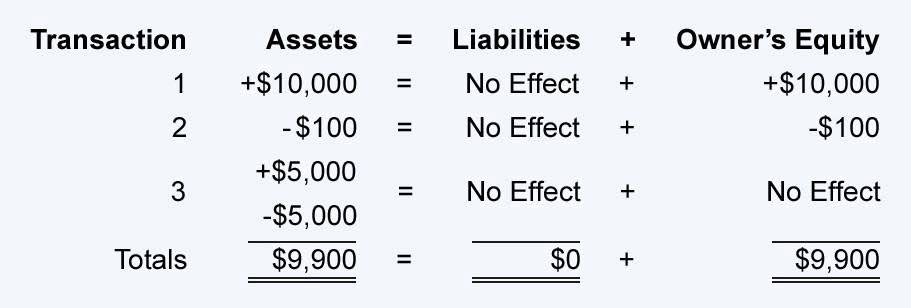Content

Partners cannot legally pay themselves a W-2 salary; instead, if you have a multi-member LLC, they must use an owner’s draw when taking money from the business. A sole proprietor’s equity balance is increased by capital contributions and business profits, and is reduced by owner’s draws and business losses. Generally, you need to make an estimated tax payment if you work for yourself.
A common question we get from new small business owners is whether it’s better to put themselves on the payroll and be paid a salary or take what’s known as an owner’s draw. For completeness, profit distributions made by S corporations are, technically, different from dividends.
Avoid These Mistakes While Paying Yourself
How to pay yourself as a business owner depends upon the business structure and payment method. The owners of sole proprietorships, partnerships, and LLCs are considered self-employed. Hence, they receive the owner’s draw and do not pay themselves regular wages. However, the owners of a corporation who are engaged in its day to day operations, https://www.bookstime.com/ need to pay themselves as salary. Keep good financial records, recording each equity distribution in your accounting software so that, at the end of the year, it’s easy to file your personal income taxes. Owner’s equity is treated a bit differently, with losses and profits passed through to the owner at the end of the tax year.
When you launch a small business or startup, you may not have enough revenue to pay yourself for the first year or two. Susan Guillory is an intuitive business coach and content magic maker. She’s written several business books and has been published on sites including Forbes, AllBusiness, and SoFi. She writes about business and personal credit, financial strategies, loans, and credit cards. Accountantsdefine equity as the remaining value invested into a business after all liabilities have been deducted. Those are the nuts and bolts, but we’ll dig into even more details of salaries and draws in a later section. Data Security & PrivacyDetails about how we protect the privacy of your business and employees.
How to Pay Yourself from a Limited Liability Company (LLC)?
Accordingly, individuals including sole proprietors, partners, and S corporations shareholders have to make estimated tax payments. Draws can be a fixed amount paid at regular times or can be taken as needed.
- We’d love to hear from you and encourage a lively discussion among our users.
- In other words, shareholder distributions are not recorded as personal income or subject to Social Security or Medicare taxes.
- If you are an owner but also an employee, you can get both dividends and a salary .
- When doing so, it’s best to work with a certified public accountant or tax advisor who can provide guidance.
- Keep in mind that Patty also needs to have enough equity to take distributions.
- The Internal Revenue Service also requires that you pay your own self-employment taxes, Social Security and Medicare taxes, and estimated taxes as well.
As the business owner, you have the discretion on when to take draws. Sole proprietors usually take money from the business in the form of a draw, which then reduces your owner’s equity. You are taxed for the overall profit of your business, no matter how much you actually draw, and Owner’s Draw vs Salary you have to file it on your income tax return for the IRS. Since owner draws are discretionary, you’ll have the flexibility to take out more or fewer funds based on how the business is doing. Furthermore, each partner includes his share of income in his personal income tax return.
Limited Liability Company
By calculating the cash, equipment and assets of your company, and subtracting any bills or unpaid accounts, you can view your owner equity of the business. You, like any employees that you have, get paid a set amount of money for each pay period. The only difference is that you calculate reasonable compensation for your work efforts and set that as your salary. All the money that you draw out is tied into the business itself.
- As the business owner, you need to pay yourself to cover your personal expenses and justify the time you spend working in your business.
- Accordingly, you will have to pay self-employment taxes on your wages if you hire yourself as an independent contractor.
- Accounts payable, representingbillsyou must pay every month, are liability accounts, as are any long-term debts owed by the business.
- You, like any employees that you have, get paid a set amount of money for each pay period.
- For completeness, profit distributions made by S corporations are, technically, different from dividends.
This is because S corporations make disbursements before corporation tax. C corporations, by contrast, pay dividends out of their post-tax profits. This means that profit disbursements may be treated differently from dividend payments on personal tax filings. Generally, all other business structures pass the company profits and losses directly to the owners. Typically, the owner’s equity is used for the sole proprietorship. In the case of an LLC or a corporation, the owner’s equity may be termed as shareholders’ equity or stockholders’ equity.
Factors deciding owners’ draw vs salary
Loans to owners must have terms like those required in traditional lending arrangements. That means there must be a signed promissory note, with stated reasonable interest rate, and a repayment schedule. Otherwise, you risk the IRS reclassifying these “loans” to dividends or salary.

LeadershipPayroll, HR, and Benefits experts ready to partner with you and your business. Learning CenterIn-depth resources designed to make your payroll, HR, and benefits experience easier.
How to pay yourself in an LLC
We’d love to hear from you and encourage a lively discussion among our users. Refrain from posting overtly promotional content, and avoid disclosing personal information such as bank account or phone numbers. This post is to be used for informational purposes only and does not constitute legal, business, or tax advice.

If you pay yourself using an owner’s draw, you’re considered self-employed, and you need to keep track of your withdrawals and make quarterly tax payments. As for which one to use, the IRS offers some insight into which payment method is appropriate for each business structure. However, there are other factors to consider, such as how you’ll be taxed. Always take a look at your profits before deciding on your paycheck.
Paying yourself from a Limited Liability Company (LLC)
Alternatively, the owner might consider borrowing money from the company and repaying it with or without interest. It is, however, crucial that repayments are agreed upon and properly made.
Draws are a distribution of cash that will be allocated to the business owner. The business owner is taxed on the profit earned in their business, not the amount of cash taken as a draw. Depending on your business structure, you might be able to pay yourself a salary and take an additional payment as a draw, based on profit for the previous year. Make sure you plan carefully to pay your tax liability on time in order to avoid penalties and be payroll compliant. If Patty takes a $100,000 owner’s draw right now, her catering company may not have enough money to pay for employees’ salaries, food costs, and other business expenses.
